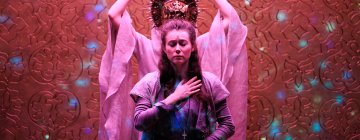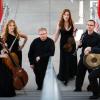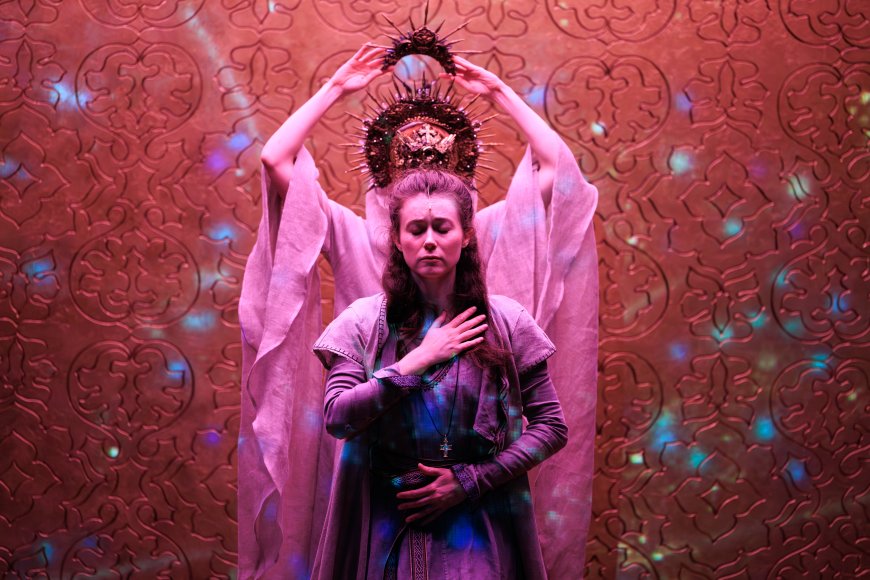
Hildegard von Bingen transcends time.
The extraordinary life of this 12th-century German abbess, polymath, composer, seer, and visionary has inspired generations of artists. She has been celebrated in pop songs, novels, and in classical works by composers like Sofia Gubaidulina. And yes, there is even a Hildegard von Bingen Society for Gardening Companions.
Now, add composer Sarah Kirkland Snider to the long list of Hildegard’s admirers.
Snider's new (and first) opera, HILDEGARD, received its eagerly anticipated sold-out world premiere with Los Angeles Opera at The Wallis Annenberg Center for the Performing Arts on Nov. 5. This tech-heavy, colorful, and earnest production is a part of LA Opera’s "Off Grand" series, intended to "expand the definition of what an opera company is.”
Snider, who wrote both the music and libretto, was intent on showing the story of someone "who has chafed against power structures or societal norms in pursuit of living their authentic truth." But her libretto makes no attempt at historical or biographical authenticity. Snider wandered far afield from what is known about Hildegard's life to create a fictionalized portrait focusing on her alleged romantic relationship with another nun, Richardis von Stade.
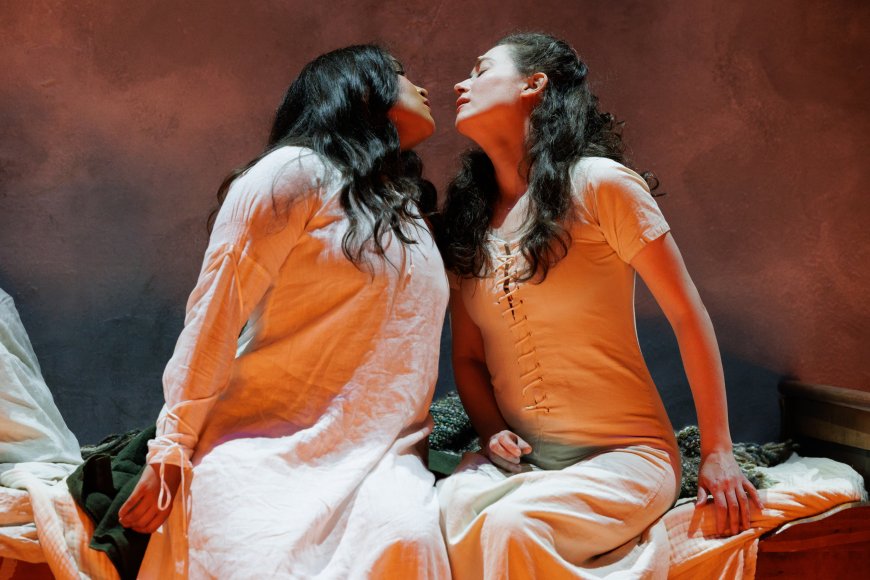
In the process, Snider has turned Hildegard's life of amazing artistic achievement and visions of sublime divinity into a speculative story of forbidden love that includes Richardis's unwanted pregnancy and suicide. That Hildegard might have had a sexual relationship with Richardis has been a matter of considerable debate, but no conclusive evidence exists. And Hildegard explicitly condemned homosexuality in her writings.
Oddly, we learn little of Hildegard's many artistic accomplishments, especially her collection of soaring sacred songs, Symphoniae. I kept waiting to hear more of Hildegard's own transcendent, pure compositions, but Snider gave us only a few brief snatches.
The opera's most effective dramatic moments depict Hildegard's famous visions — or hallucinations — described in her illustrated volume, Scivias. Director Elkhanah Pulitzer successfully employed Artwork and Projection Designer Deborah Johnson's undulating computer-generated images, with delicate lighting design by Pablo Santiago, to illustrate the weirdness and otherworldliness of Hildegard's vivid nightmares. The minimal set, designed by Marsha Ginsberg, is dominated by an open cube that rotates and moves about the stage, representing a bedroom, or an artist's studio, or a cell.
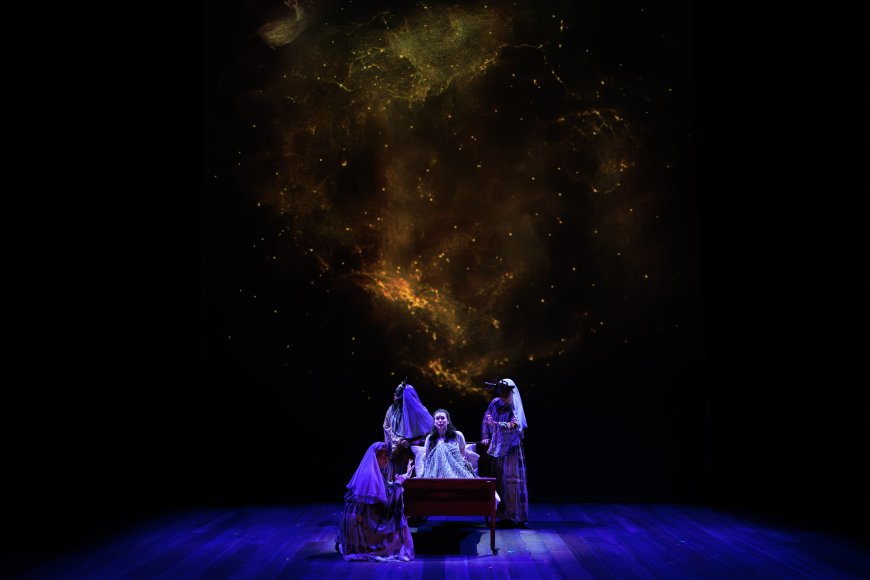
Snider said she was drawn to Hildegard's story because historians have speculated that her visions may have been the result of migraines, from which Snider also suffers. But when Snider's Hildegard tells Richardis "I am getting a migraine," the line feels anachronistic in what is supposed to be the year 1147.
Snider has made her reputation as a composer of "rapturous" works such as the resplendently spiritual, multi-layered, and polyphonic Mass for the Endangered (2018), which seems heavily indebted to the quasi-religious works of Estonian composer Arvo Pärt. But the music of HILDEGARD relies heavily on the recitative for its leading characters, with little of the medieval flavor heard elsewhere in Snider's oeuvre.
Written for a small chamber-sized ensemble of eleven players, the restrained orchestral score provides gentle, churning accompaniment dominated by the harp (played beautifully by Anya Garipoli). Gabriel Crouch conducted with restraint and precision. A vocal refrain in Latin occurs before each of Hildegard's visions, and recorded voices of chanting (both Hildegard's and Snider's) resound at strategic points in the action.
As Hildegard, Australian American soprano Nola Richardson gave an engaging, intense, and vocally impressive performance. She delivered a long aria in the second act describing Hildegard’s youth with poignant lyricism and vocal agility. Mikaela Bennett sang passionately and brought pathos to the somewhat thankless role of Richardis.
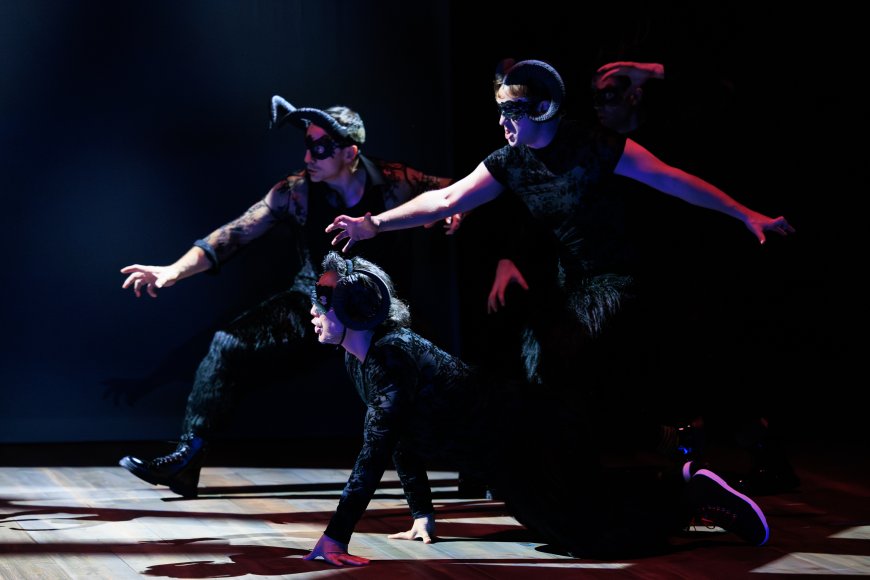
The men in HILDEGARD are mostly mean and misogynistic, intent on thwarting Hildegard's dreams of independence and creating a safe place for religious women. No doubt that is the way it was in 1147, but Snider turns them into modern caricatures. Baritone David Adam Moore sings the role of Abbot Cuno — the worst of them — with energy, but his music has little personality. Tenor Roy Hage brings tenderness and a pleasant voice to the character of Hildegard's only friend, the priest Volmar.
While one respects Snider's desire to view Hildegard's life through the prism of the feminist struggle against male domination, her opera fails to convey why we remember her today — because of Hildegard’s amazing and varied artistic achievements.
Hildegard was so much more than a woman in love.
